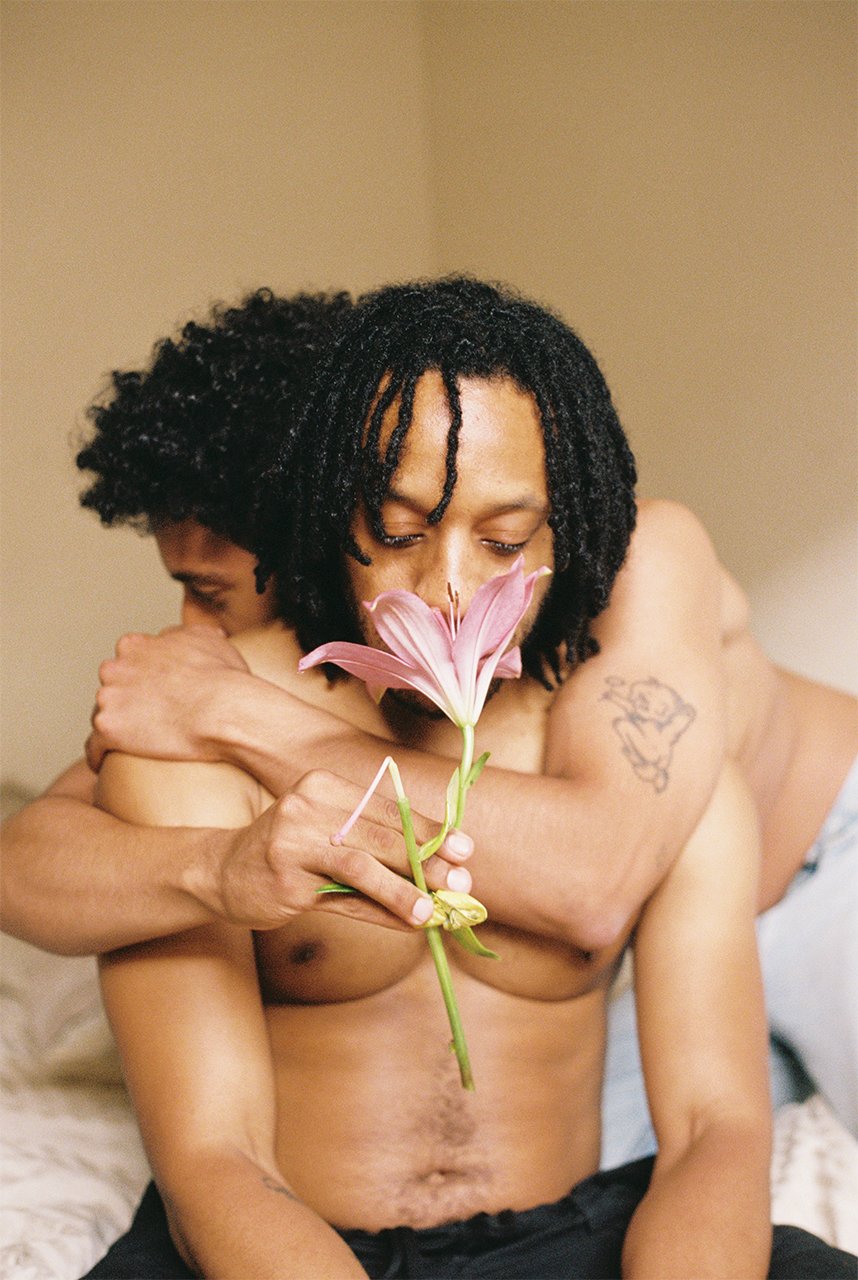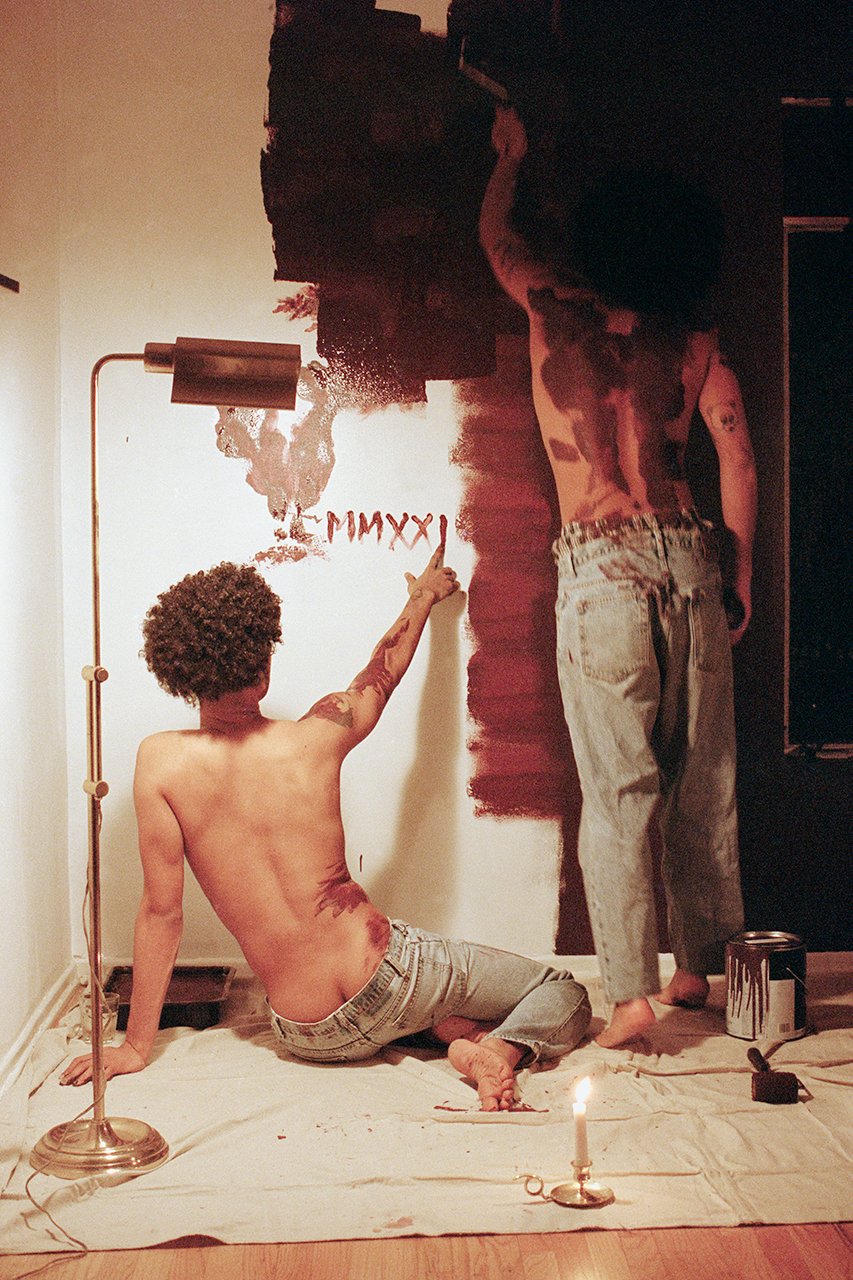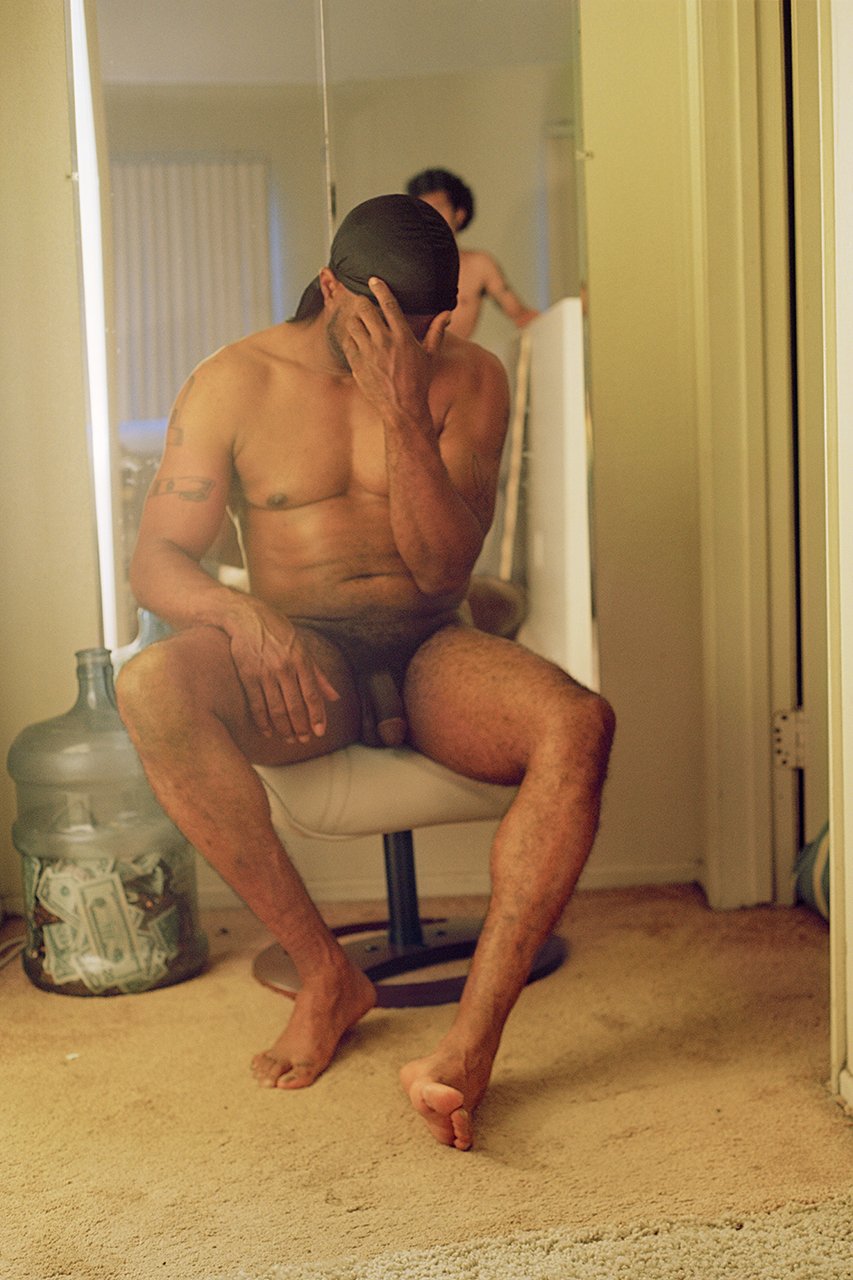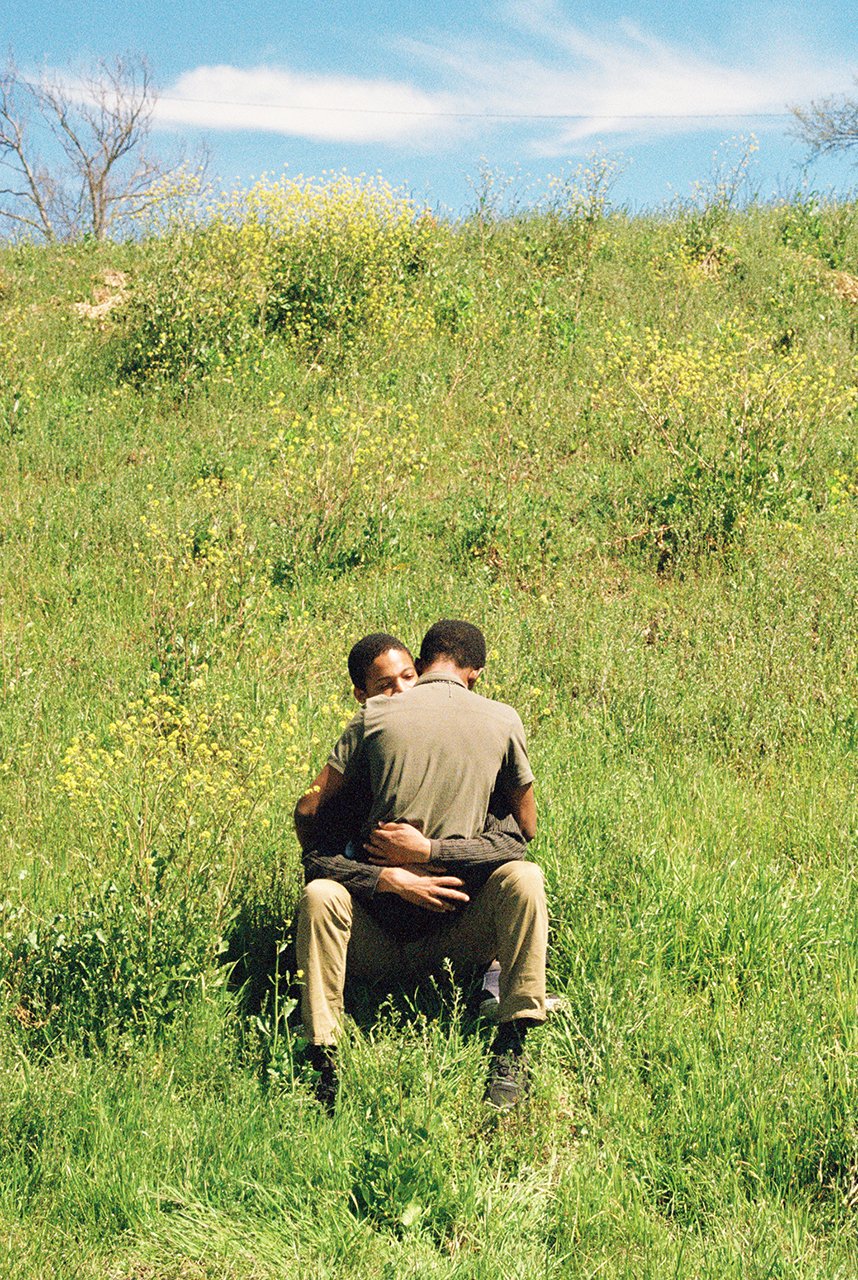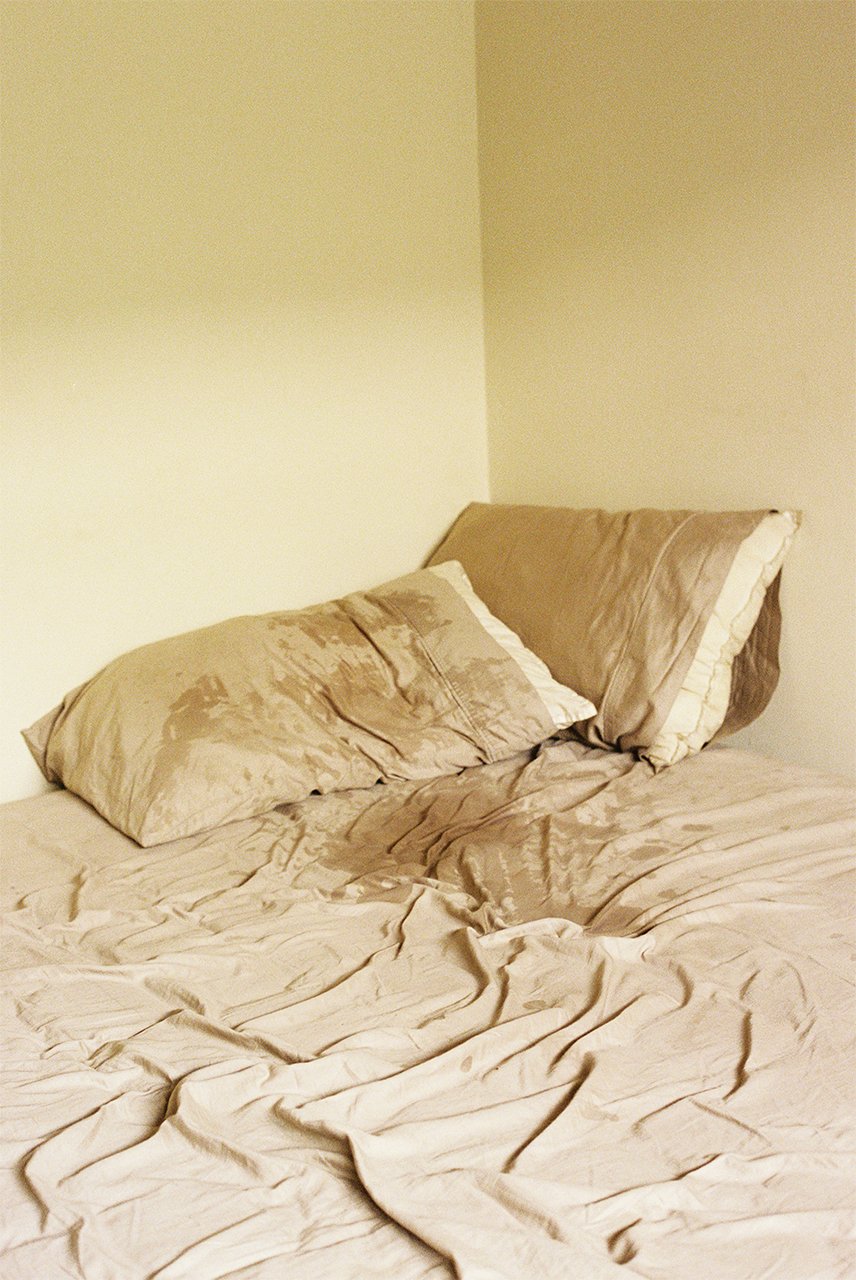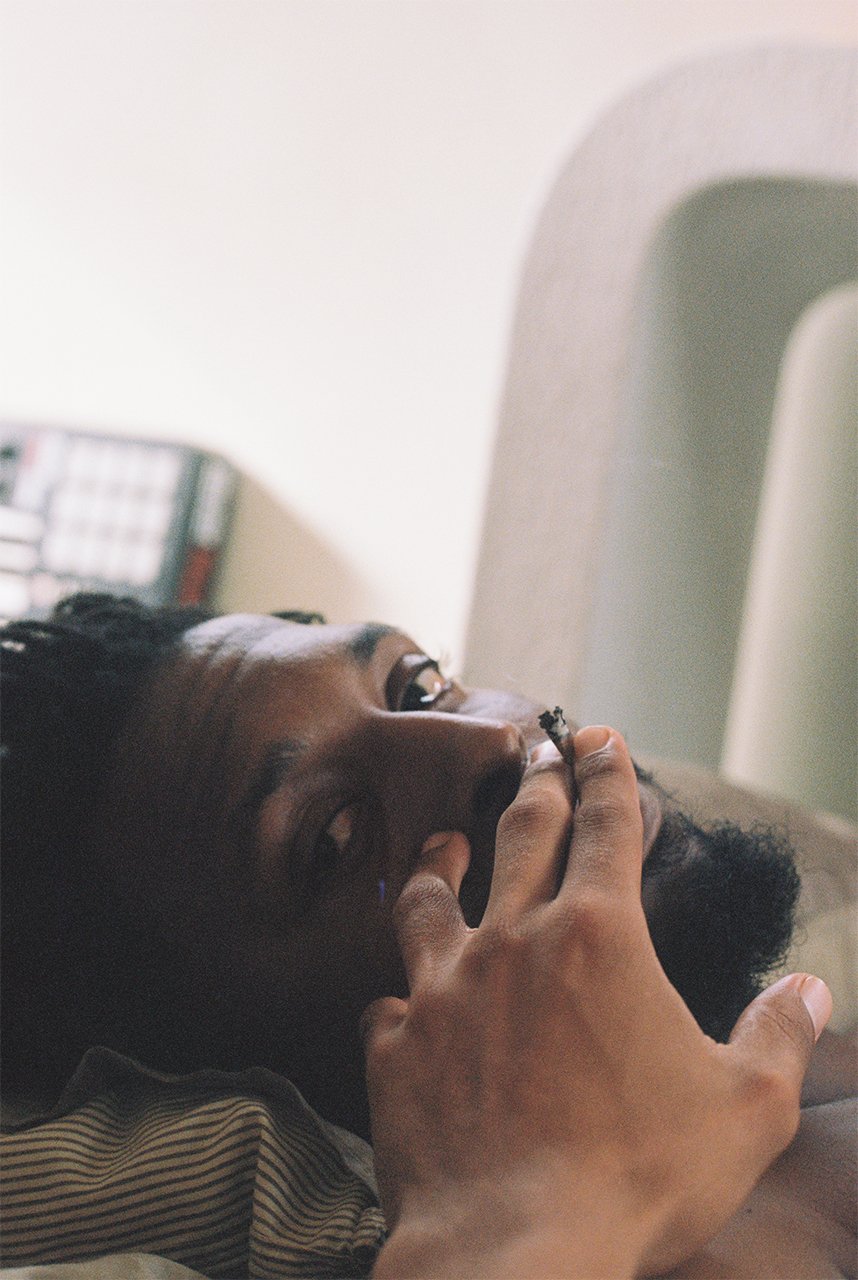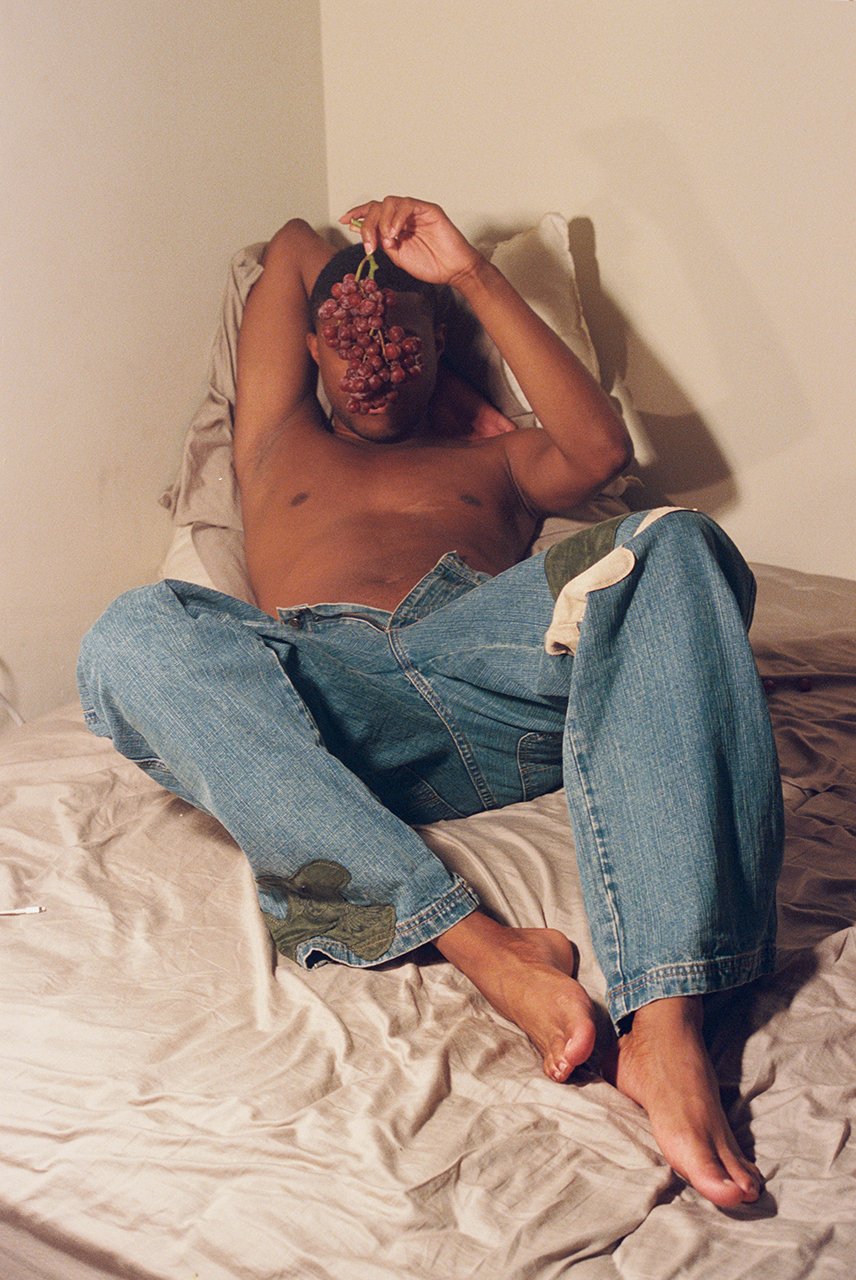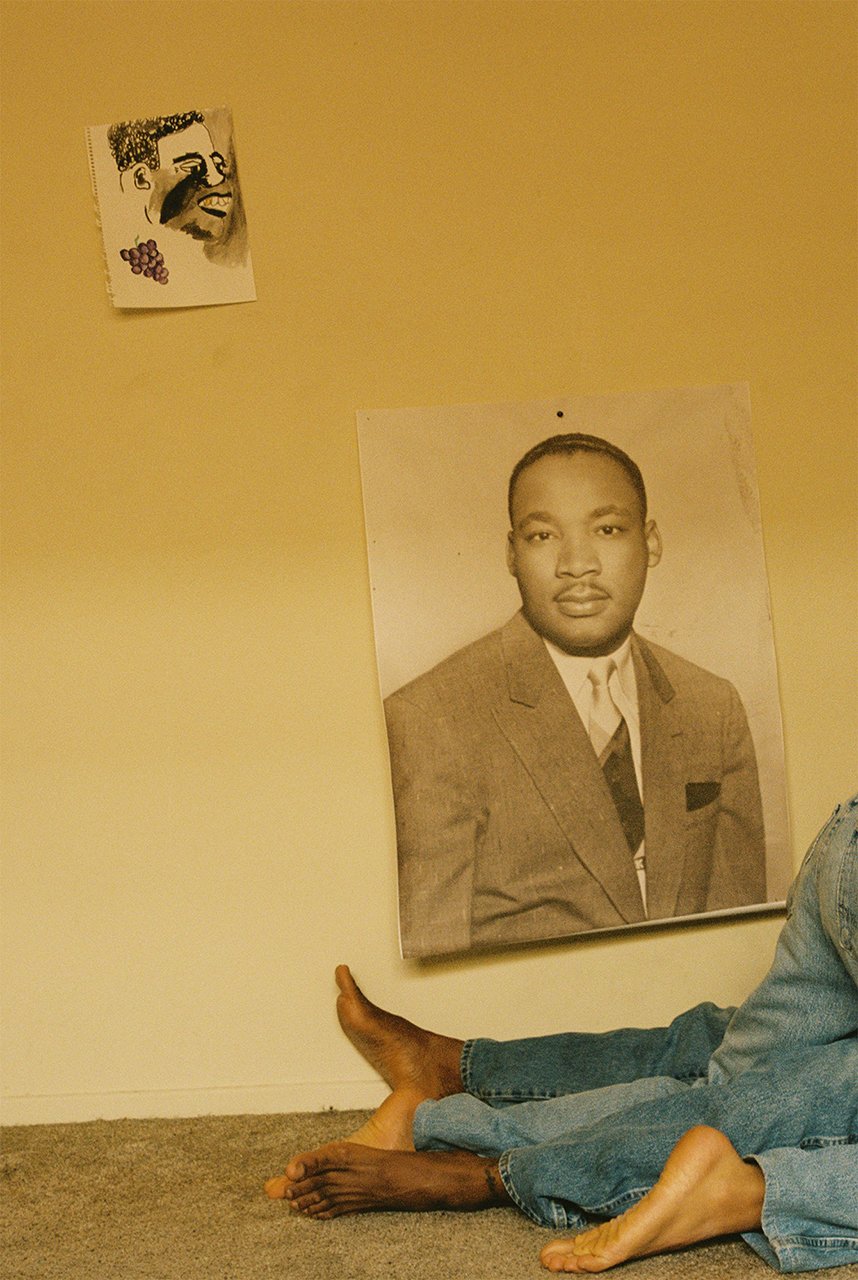Q&A: clifford prince king
By Jess T. Dugan | September 29, 2022
Clifford Prince King is an artist living and working in New York and Los Angeles. King documents his intimate relationships in traditional, everyday settings that speak on his experiences as a queer black man.
Jess T. Dugan: Hello Clifford! Thank you so much for taking the time to speak with me today. To begin, can you tell me what led you to photography and what your path was for getting to where you are today?
Clifford Prince King: I’ve always had a camera. Initially, a VHS camcorder, disposables, and then I was given a SLR film camera when my high school’s darkroom photo department shut down towards the end of my freshmen year. I took photos of my friends and surroundings when I would travel. Eventually, I moved to Portland, Oregon and felt disconnected because I was lacking community amongst black queer people. I started taking photos of the few people I had met that were black and queer; as a way to meet them, but also to spend time. I hadn’t really photographed anyone with intention up until my last year in Portland. Once I unlocked that practice and realized I could express myself, learn about myself and tell mine and other’s stories, I went more in that direction. Eventually, I moved to Los Angeles and started photographing my daily life, as well as the artists, friends and lovers I was hanging out with. I think my way of expressing myself through photography can be ambiguous. Mainly stills from a larger picture with a broader story behind it and I feel that that connects with people. Long story short, I had been working at a grocery store in Los Angeles for about 4 years and once 2020 came along, I was steadily becoming more recognized and able to exhibit my work, do some editorial and commercial jobs. I’m still very much in the same headspace as before, as far as how I see myself. I’m just grateful.
Communion
JTD: You write that your work “honors and celebrates the reality of layered personhood,” a sentiment I love. Can you expand on this idea?
CPK: One of my great friends Syd Haliburton actually wrote this about my work, and I really felt seen by this description. I think for me, this sentiment truly points out the individual as just that, an individual on their own journey. I feel like it’s the better way of describing coming of age, more updated. With celebrating layers, transitions, progress and growth. It’s acknowledging the reality of what love actually looks and feels like.
JTD: As you mentioned, your work is highly personal, focusing on your intimate relationships and your identity as a queer black man. Can you talk to me about how these multiple aspects of your identity inform one another and intersect in your work?
CPK: I think it’s just a personal perspective in regards to how queerness and blackness have intersected within my work. I feel like I was searching for a space or affirmation within the black community, and I was discovering my queerness when I finally felt like I had the space to do so. They just so happened to develop around the same time. I’ve always felt very displaced or in the wrong time period. Constantly seeking what I’ve always wanted, and taking baby steps on my terms for the first time.
I told my baby to meet me on 24th street
JTD: How important is the idea of representation to you? Do you feel you are creating images you wish you had seen when you were younger?
CPK: Very important. I think representation can save a lot of people years of confusion and heartache, by seeing themselves (in media and art) being portrayed within everyday life. I think that can provide courage, understanding and ease for someone’s personal journey. I find that I’ve created most images because I hadn’t seen this form of intimacy and closeness amongst people like myself.
Just the two of us
JTD: What is your process for photographing? How do you select subjects? What does a shoot typically look like for you? And, what does your process look like on an even more expansive scale, over time?
CPK: I guess the progress starts with an experience or a daydream. As a photographer in 2022,I feel like it’s more difficult for me to point my camera wherever I want. People are very aware of cameras more than ever and also with social media, photos feel more like an invasion of privacy than flattery. So if I experience something special, either romantically, or in public, I end up just trying to recreate the image with people who are comfortable being photographed. Sometimes the photograph is directly taken within the space of the inspiration; other times it is reenacted. I will stage an image if it’s more of a daydream or fantasy that I’d like to see come to life. I’ll mainly ask friends, and if I’m brave I’ll ask people I’ve met briefly or only once. I do this regularly, and just sit on images, or I’ll share. There’s never really a pressure on my end to have new work because there is so much that is already there. It’s been a pleasure to revisit.
JTD: There’s a poetic quality to many of your images. To me, they feel gentle and warm, infused with intimacy and comfort. How do you think about ideas such as intimacy, gentleness, and community?
CPK: These ideas stem from a longing and visual evidence that I didn’t grow up seeing. So once I was experiencing those moments personally, I wanted to save them, keep them and hold onto them. Slowly creating this evidence of black love and togetherness made me feel like I was living in my truth. I’m certainly aware there was and is work that has documented these themes in the past, but I never knew or was aware, which I think is unfortunate. I guess later on in my practice, it began to feel like I was contemporizing the work for younger people to see and have easier access to.
Safe space
JTD: We are currently in a moment where art institutions, along with the world more broadly, are re-examining their commitments to diversity and attempting to make systemic changes. As part of this shift, there is significant interest in work by queer artists and artists of color. How are you experiencing this moment, professionally? And what are your thoughts about this moment, more broadly?
CPK: I think it’s easy to feel a little annoyed at this somewhat newfound interest. It’s been a long time coming, and it’s unfortunate that many artists of the past weren’t able to see the fruits of their labor to a certain extent while still living. I feel really grateful to be recognized for my work. Not just as a queer black artist, but as an artist overall. I believe my works can stand alone regardless of the themes and can be appreciated for being done well. 2020 catapulted my artistic journey for sure, but now I’m trying to focus that energy on doing what it is I’ve always done and had an eye for, as well as being experimental and not just making work that people expect me to make.
JTD: What are you currently working on, and what’s on the horizon for you?
CPK: I’m working on my first museum show at Carolyn Campagna Kleefeld Contemporary Art Museum as well as my first solo exhibition in NYC. Aside from that, I’m traveling abroad, doing some writing and just trying to take care of my body.
JTD: Wonderful, thanks so much, Clifford.
For what it’s worth
All images © Clifford Prince King





